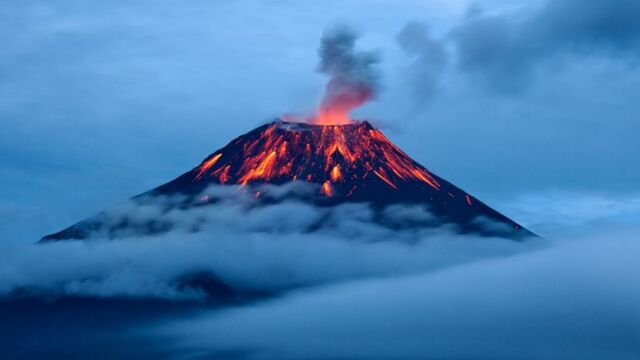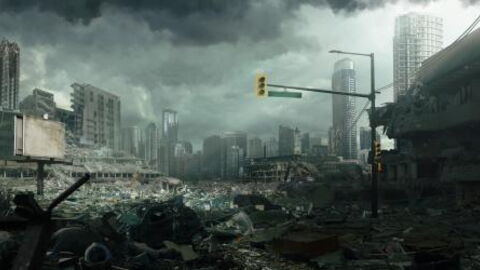Theend of the world is a subject we all think about sometimes, but how exactly it would come about is much less certain. It seems that waiting for any old cosmic object to give us a love tap is a largely obsolete idea since the apocalypse could well come... from beneath our feet!
Discover our latest podcast
Super-volcanoes have undoubtedly caused many more fatal incidents over the millennia than asteroids. Until now, we thought that these sleeping giants took thousands of years to accumulate magma before the lava came up to scorch the surface side of our planet. Buta study by researchers from Vanderbilt University in Nashville (United States) conducted in 2012 indicates that these catastrophic eruptions would likely occur only a mere hundred years after the formation of the initial magmatic pocket.
Super volcanoes, super monsters
The consequences of this kind of events are extreme. They would do as much damage as apossible nuclear war or global warming running amok. Indeed, that kind of eruption would cause a mind-boggling amount of ash to be spewed into the atmosphere, which would then obfuscate sunlight.
The repercussions could be devastating and would cause a considerable drop in temperature, resulting in the extinction of thousands of species. Moreover, the past extinction of 95% of all plants and animal species 250 million years ago is more and more likely to have been caused by this kind of event. Likewise, some scientists persist in claiming thatsuch as a volcanic eruption caused the extinction of the dinosaurs 65 million years ago.
So, are we really in grave danger on a daily basis? Are we walking on ground under which lies our ultimate reaper? Is a volcano of this magnitude about to burst somewhere on Earth? Well, scientists assure us that no super volcano is about to erupt. The formation of one of these flare-ups would be spotted by the accumulation of lava comparable to a gigantic pool of liquid fire.
But let us not forget that these are the same experts who had guaranteed that the formation of this magma took thousands of years before it could erupt. Guilherme Gualda, a professor at Vanderbilt University, explained:
Our study suggests that these exceptional magma pockets are ephemeral and cannot exist for so many years without erupting.
Evidence of the past foretelling the future?
This prediction was made in conjunction with the measuring of crystal formation in molten magma. This technique allows us to establish a geological clock and, thus, date a volcano's past outbursts. The team of geophysicists, including Guilherme Gualda, observed the disintegration of zircon crystals present in volcanic rocks and identified that giant magma pockets have existed for 100,000 years.
They also observed the crystallization of quartz, the most abundant mineral in volcanic deposits. On the whole, it offers the conclusion that the eruption of such a pocket could take place in about 500 years.
Should we be worried then? Gualda's team claims that there is no discernible threat at the moment. But one of the real concerns of scientists remains that of Yellowstone National Park. As it turns out, an eruption that occurred a million years ago is believed to have been well over 2,000 times more powerful thanthat of Mount Saint-Helens, in 1980.

Researchers from Washington State University (United States) have been able to demonstrate that these deposits do not date from a single eruption, but rather from two at least 6,000 years apart. This bipartite eruption does not necessarily mean that the eruptions were not powerful. The first, however, was much larger, causing the sky to darken. California ashes have even been found in Mississippi, on the other side of the continent! In addition, this region appears to be in full seismic activity.
Even if this is fictional, it would seem that super-volcanoes are not things to ignore lightly. For it turns out that they could blow their gasket much faster than you think.















